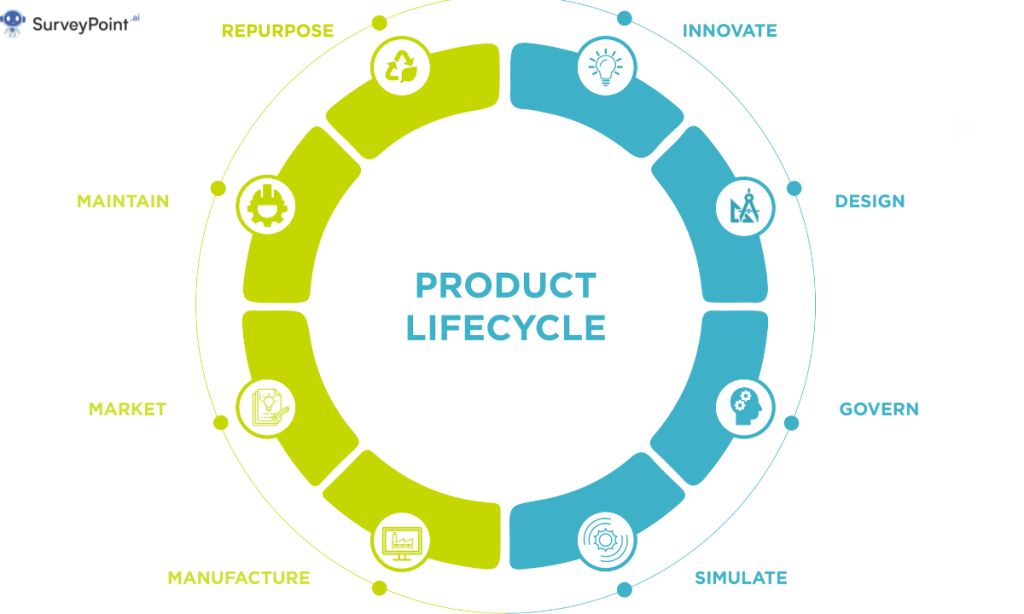
The product lifecycle is a critical concept in marketing and business strategy, delineating the stages a product goes through from inception to its eventual phase-out from the market. Recognizing and navigating these stages can help businesses optimize their marketing strategies, production processes, and resource allocation. This blog explores the different stages of the product lifecycle, with a focus on the Indian market, using real-life examples to illustrate each phase.
Stages of the Product Lifecycle
- Development Stage
- Introduction Stage
- Growth Stage
- Maturity Stage
- Decline Stage
1. Development Stage
Description: This stage involves the ideation, research, and development of a new product. It includes market research, product design, and initial testing.
Key Activities:
- Conducting market research to identify customer needs and preferences.
- Designing and developing prototypes.
- Testing the product for functionality and market fit.
Example: Tata Nano
In the early 2000s, Tata Motors identified a gap in the market for an affordable car for the Indian middle class. The development of Tata Nano involved extensive market research and innovative design to keep costs low while ensuring functionality and safety.
2. Introduction Stage
Description: The introduction stage marks the launch of the product into the market. Marketing efforts are focused on creating awareness and stimulating demand.
Key Activities:
- Launching the product with promotional campaigns.
- Educating potential customers about the product’s benefits.
- Building distribution channels.
Example: Paytm
When Paytm launched its mobile wallet service, it focused on educating users about the benefits of cashless transactions. Aggressive marketing campaigns, cashback offers, and partnerships with merchants helped in building awareness and adoption.
3. Growth Stage
Description: In the growth stage, the product gains acceptance, and sales start to increase rapidly. Companies often expand their distribution and improve the product based on customer feedback.
Key Activities:
- Expanding distribution channels.
- Enhancing product features and quality.
- Intensifying marketing efforts to reach a broader audience.
Example: Flipkart
After its initial success, Flipkart rapidly expanded its product range, improved logistics, and increased its marketing efforts. The introduction of innovative services like cash on delivery and easy returns contributed to its growth.
4. Maturity Stage
Description: The maturity stage is characterized by a slowdown in sales growth as the product reaches market saturation. Competition becomes intense, and the focus shifts to differentiating the product and retaining customers.
Key Activities:
- Enhancing product features and quality to differentiate from competitors.
- Implementing loyalty programs to retain existing customers.
- Finding new markets or segments.
Example: Maruti Suzuki Swift
Maruti Suzuki Swift, having been in the Indian market for several years, continues to maintain its popularity. During its maturity stage, the company has introduced various updates and special editions to keep the product appealing to customers.
5. Decline Stage
Description: In the decline stage, sales and profits begin to fall. This can be due to market saturation, technological advancements, or changing consumer preferences. Companies must decide whether to rejuvenate the product, discontinue it, or pivot to new opportunities.
Key Activities:
- Reducing marketing and production costs.
- Exploring options to rejuvenate the product.
- Planning the phase-out strategy.
Example: Ambassador Car
The iconic Ambassador car, once a symbol of Indian roads, faced a decline due to outdated design and increasing competition from modern vehicles. Despite efforts to modernize the car, it eventually had to be phased out.
Managing the Product Lifecycle in the Indian Market
1. Understanding Consumer Preferences: Indian consumers are diverse and price-sensitive. Conducting regular market research is essential to stay updated with changing preferences.
2. Adaptability and Innovation: Businesses must be agile and ready to innovate. Whether it’s through technological upgrades or introducing new features, staying ahead of the curve is crucial.
3. Strategic Marketing: Effective marketing strategies tailored to each stage of the product lifecycle can significantly impact the product’s success. This includes creating awareness during the introduction stage and focusing on customer retention during maturity.
4. Leveraging Data and Technology: Utilizing data analytics can provide insights into consumer behavior and market trends, helping businesses make informed decisions at each stage of the product lifecycle.
Conclusion
Understanding the product lifecycle is vital for businesses to navigate the complexities of the Indian market. By recognizing the distinct stages – development, introduction, growth, maturity, and decline – and implementing appropriate strategies, companies can maximize their product’s success and longevity. Whether it’s through innovation, strategic marketing, or adapting to consumer preferences, effectively managing the product lifecycle can lead to sustained growth and competitive advantage in the dynamic Indian market. For more information checkout- surveypoint.ai




